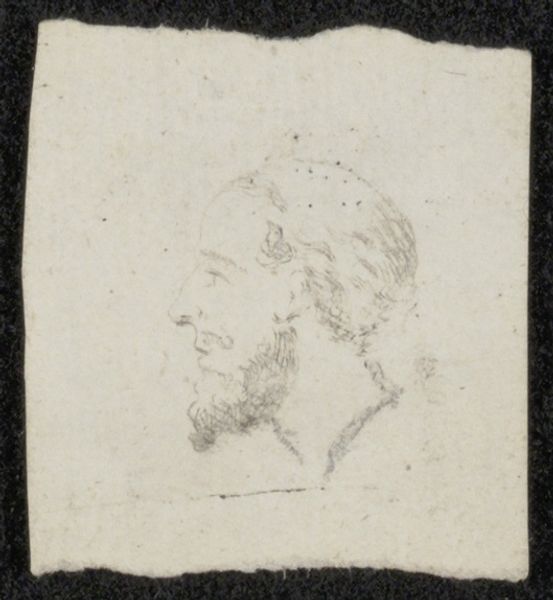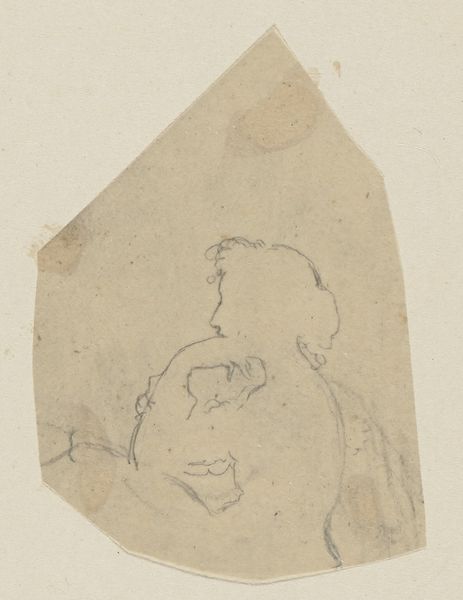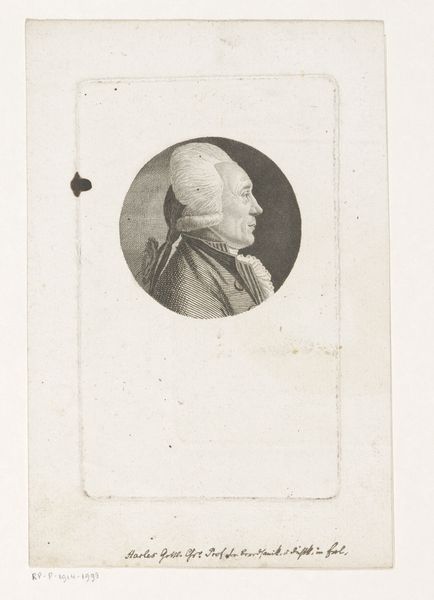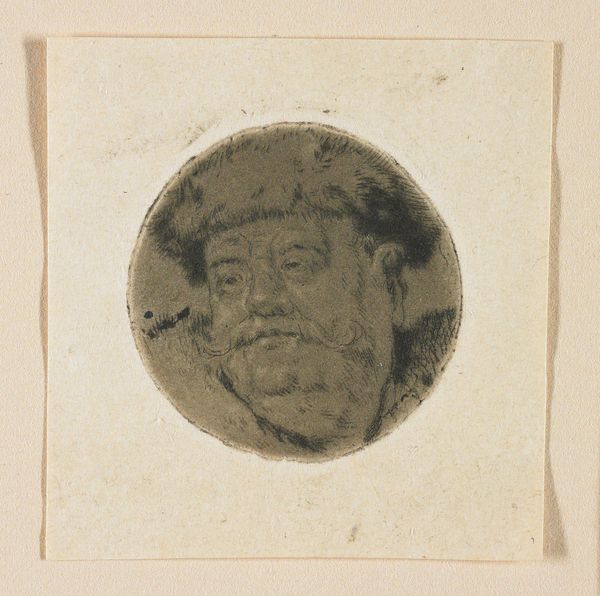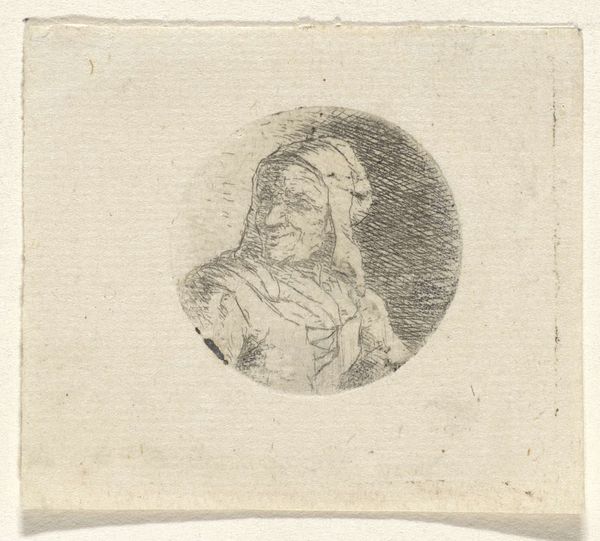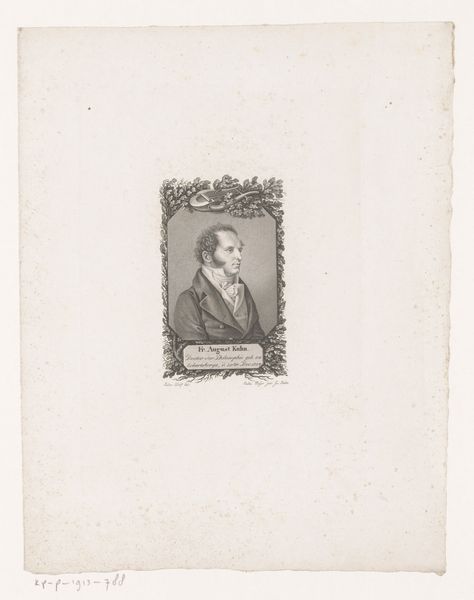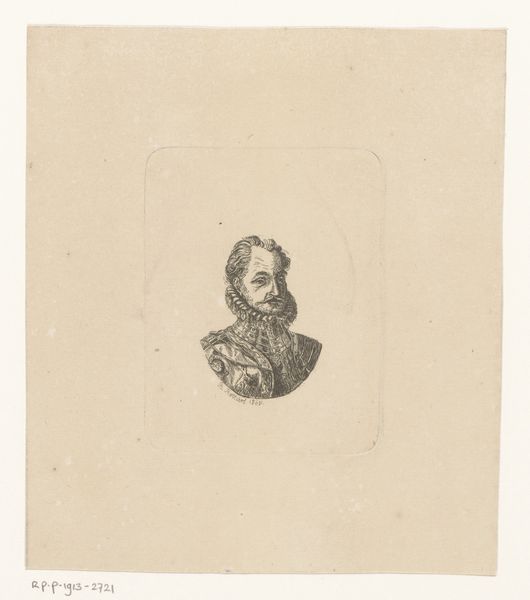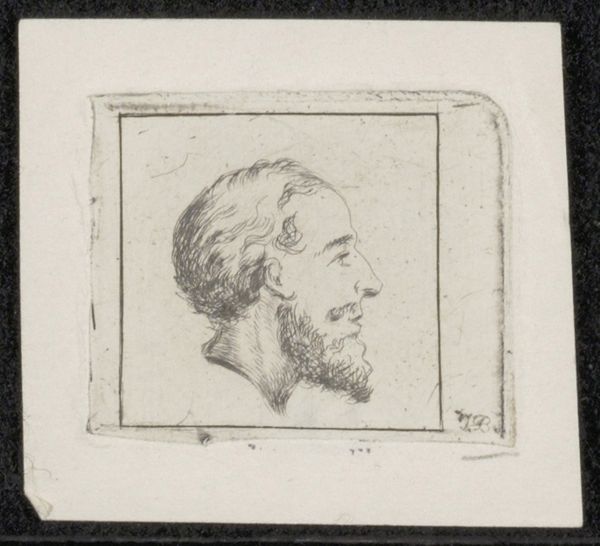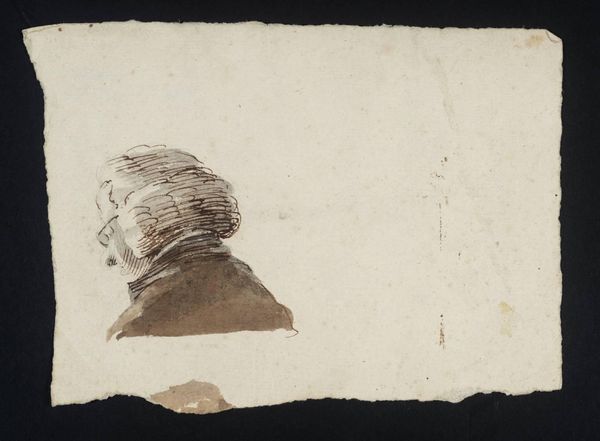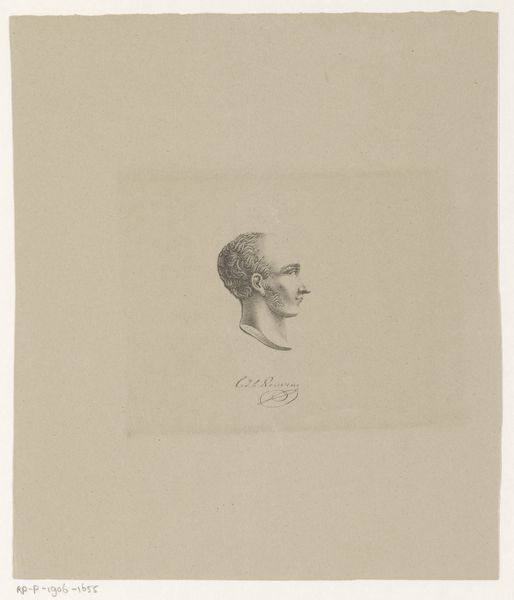
drawing, pencil
#
portrait
#
pencil drawn
#
drawing
#
self-portrait
#
pencil
Copyright: Rijks Museum: Open Domain
Curator: I'm struck by the vulnerability in this self-portrait, even given its preliminary state. The delicate lines, the unfinished quality, it all feels incredibly intimate. Editor: Indeed. We are looking at a drawing by Jean Bernard, entitled "Zelfportret," dating from approximately 1785 to 1833. It’s a pencil drawing held here at the Rijksmuseum. Notice its presentation too, it's a ragged scrap of paper, highlighting its provisional nature. Curator: Precisely. Pencil, in itself, speaks to a process. Not the finalized product of a painting, or even a formal print, but a step towards something, or perhaps simply a moment captured. The economic accessibility of paper and pencil allowed for a proliferation of such sketches, moving image making away from formal patronage. Editor: Absolutely. Consider the period – the late 18th and early 19th centuries – a time of revolution, social upheaval and, crucially, the rise of a bourgeois public. Portraiture, previously the domain of the aristocracy, starts democratizing. And institutions like museums began to exhibit more of such drawings for the public. Curator: It's almost a challenge to traditional notions of self-representation. We have a subject almost disappearing into the very material he is rendering himself in. The soft gradients of the pencil seem to hint that this "self" is never fully resolved, always in progress, mirroring the instability of the times. Editor: This unfinished quality adds a layer of accessibility. It's not the polished, idealized image commissioned to project power, but an intimate, personal observation, accessible because of its lack of grandeur and a glimpse behind the artist's image as he represents himself in this time period. It invites empathy, which served to solidify the idea of civic responsibility for individuals through common shared experience. Curator: Well said. It seems to ask: what materials and techniques truly allow an individual to be represented faithfully and who is this art really for? Editor: And how public art shapes individual identity through the means of portraiture for the ages. Curator: Food for thought, definitely.
Comments
No comments
Be the first to comment and join the conversation on the ultimate creative platform.
